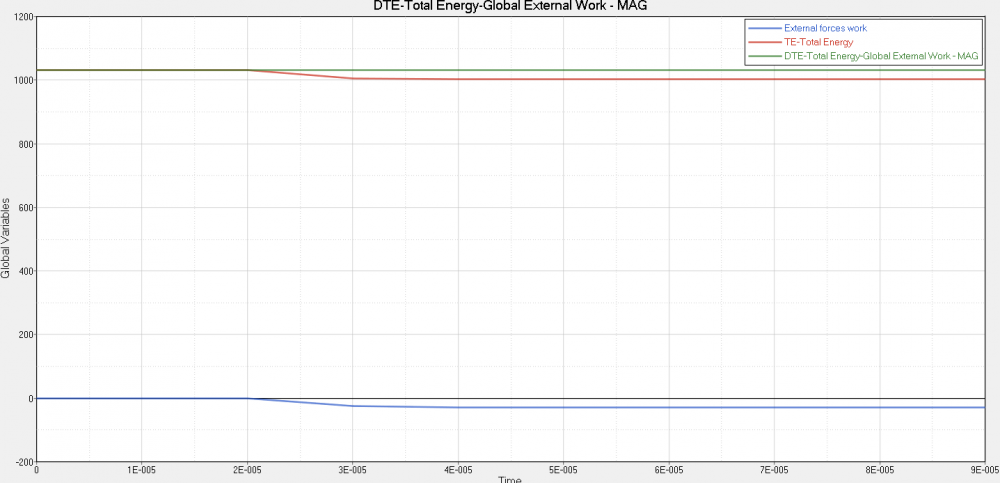Hello together,
At the moment I am working on impact simulations in Radioss. I have an aluminium cylinder (solid elements, MAT Law 2, Initial Velocity) impacting a rigid wall. The total energy (TE = KE + IE) should be constant, but there is a jump in the curve. The DTE curve remains constant. The external work shows a decrease, too. Is my simulation correct? Should i use the DTE curve instead of the TE curve for validation?
<?xml version="1.0" encoding="UTF-8"?>